Paul Revere was a silversmith and patriot who lived in Boston, Massachusetts during the American Revolution.
He is most famous for alerting local militia of the approaching British forces shortly before the battle of Lexington and Concord.
The following are some facts about Paul Revere:
Paul Revere Childhood & Early Life:
Born in the North End of Boston in December of 1734, Revere’s father was Apollos Rivoire, a French Huguenot immigrant who later changed his name to Paul Revere to fit in with the English immigrants in the city. Revere’s mother was Deborah Hichborn, a daughter of a local artisan family.
Paul Revere served as an apprentice in his father’s goldsmith shop. After his father died when Paul was 19 years old, he took over his father’s shop and became responsible for his large family.
Paul Revere in the French and Indian War:
At age 21, Paul Revere fought in the French and Indian War in New York. Revere was appointed second lieutenant in the colonial artillery but only served a short stint in the war, during a failed expedition to Lake George in upstate New York, and returned to Boston without seeing much military action.
Revere returned to civilian life and married Sarah Orne on August 4, 1757. Together they had eight children. Three of Revere’s daughters later married into Abraham Lincoln’s family and three of his grandsons fought in the Civil War.
Paul Revere & the Freemasons:
Although Revere’s silversmith shop was successful and his work was sought after, the economic depression before the American Revolution hit his business hard and he was forced to supplement his income by working as an engraver, a courier and also as a dentist (installing false teeth with metal wires.)
An important step in Revere’s life was when he joined the Masonic Lodge of St. Andrew in September of 1760. Here he met patriot activists such as Joseph Warren, James Otis and John Hancock and soon became involved in the activities of the American Revolution.
Although joining St. Andrew’s lodge opened many doors for Revere, it is also where he began a rivalry with fellow Freemason William Burbeck that later impeded Revere’s military career.
The rivalry began in 1773 when Revere voted to kick Burbeck out of the lodge for refusing to hand over the lodge charter, according to the book A True Republican: The Life of Paul Revere:
“Although business took up much of Revere’s time, he also became entangled in a complicated dispute between William Burbeck and St. Andrew’s Lodge of Freemasons. On March 5, 1773…the Master, Warden, and a ‘number of Brethren of St. Andrew’s’ informed the Massachusetts Grand Lodge that they had been deprived of their charter by Burbeck, a former Master of the lodge, and asked for a dispensation until they could obtain a copy of the charter from the Grand Lodge of Scotland…On February 18, 1768, the eight lodge members who had originally purchased the Green Dragon conveyed the property to Burbeck. Seven other members of St. Andrew’s lodge were to reimburse Burbeck with interest within ten years, after which Burbeck would convey the property to yet another group of seven lodge members, including Paul Revere. In April of 1771 Burbeck took the lodge charter into his possession, and in July 1772 Revere was a member of of a committee ordered to ‘warn Mr Burdick [sic] out of this house’ for refusing to surrender the charter. Perhaps Burbeck was using the lodge charter to as a bargaining chip to ensure that his lodge brothers would repay him. But one Masonic historian believes that Burbeck’s actions were motivated more by his concern over the impact of Paul Revere’s political zeal on the future of St. Andrew’s Lodge.”
The book The Lodge of Saint Andrew and the Massachusetts Grand Lodge suggests that Burbeck, the son of an Englishman, feared that Revere, the son of a Frenchman, held a lot of anti-British sentiment and would use his power in the lodge to break with the Grand Lodge of Scotland and any other British association.
As a result, Burbeck held onto the charter for the rest of his life, only giving it up on his deathbed, but the lodge members eventually secured a replacement copy and allowed him continue his membership.
The dispute left quite an impression on Burbeck, who later became a lieutenant colonel in Gridley’s Massachusetts Regimental Artillery and allegedly used his position to block any military promotions Revere tried to secure.
Paul Revere & the Sons of Liberty:
Around the same time that Revere joined St. Andrew’s lodge, he also joined the Sons of Liberty, a group of political militants who organized protests against British forces.
The Sons of Liberty, who used the Green Dragon Tavern as their headquarters, were responsible for dumping millions of dollars worth of tea into Boston harbor during the Boston Tea Party, which Paul Revere took part in.
Tragedy struck when Revere’s wife died in childbirth on May 3, 1773, leaving him a widower with a newborn and many children to care for.
Revere remarried a few months later, on September 23, to a woman named Rachel Walker, with whom he had eight more children.
In the fall of 1774, Revere founded one of the first spy rings in America, the Mechanics, to keep track of British troop movements, according to the book Paul Revere’s Ride:
“Many years later he [Revere] recalled that ‘in the Fall of 1774 and Winter of 1775, I was one of upwards of thirty, chiefly mechanics, who formed ourselves into a committee for the purpose of watching the movements of the British soldiers, and gaining every intelligence of the movements of the Tories. We held our meetings at the Green Dragon Tavern.'”
The Mechanics were eventually infiltrated by a British spy working for General Thomas Gage. Although Revere never discovered the identity of the spy at the time, it was later revealed to be Dr. Benjamin Church.
Unlike many other patriot activists at the time, such as Samuel Adams and John Hancock, Revere was not a member of the noble class and aside from his activities in the mason lodge, his limited education and vocation as an artisan prevented him from traveling in the same social circles as many of the other activists.
The Midnight Ride of Paul Revere:
It was Revere’s side job as a courier for the Boston Committee of Public Safety and his involvement in the mason lodge that led to his famous ride.
On the night of April 18, 1775, fellow lodge member Dr. Joseph Warren instructed Revere and William Dawes to ride to Lexington and warn John Hancock, Samuel Adams and local militia of approaching British forces.
Along the way, Revere and Dawes met local physician Samuel Prescott, who decided to join them. The ride was later immortalized in a poem by Henry Wadsworth Longfellow titled “Paul Revere’s Ride.”
Revere also wrote his own account of his famous ride and his eventual capture by British troops:
“When we had got about half way from Lexington to Concord, the other two stopped at a house to awake the men, I kept along. When I had got about 200 yards ahead of them, I saw two officers as before. I called to my company to come up, saying here was two of them, (for I had told them what Mr. Devens told me, and of my being stopped). In an instant I saw four of them, who rode up to me with their pistols in their bands, said ”G—d d—n you, stop. If you go an inch further, you are a dead man.” Immediately Mr. Prescot came up. We attempted to get through them, but they kept before us, and swore if we did not turn in to that pasture, they would blow our brains out, (they had placed themselves opposite to a pair of bars, and had taken the bars down). They forced us in. When we had got in, Mr. Prescot said ”Put on!” He took to the left, I to the right towards a wood at the bottom of the pasture, intending, when I gained that, to jump my horse and run afoot. Just as I reached it, out started six officers, seized my bridle, put their pistols to my breast, ordered me to dismount, which I did. One of them, who appeared to have the command there, and much of a gentleman, asked me where I came from; I told him. He asked what time I left. I told him, he seemed surprised, said ”Sir, may I crave your name?” I answered ”My name is Revere. ”What” said he, ”Paul Revere”? I answered ”Yes.” The others abused much; but he told me not to be afraid, no one should hurt me. I told him they would miss their aim. He said they should not, they were only waiting for some deserters they expected down the road. I told him I knew better, I knew what they were after; that I had alarmed the country all the way up, that their boats were caught aground, and I should have 500 men there soon. One of them said they had 1500 coming; he seemed surprised and rode off into the road, and informed them who took me, they came down immediately on a full gallop. One of them (whom I since learned was Major Mitchel of the 5th Reg.) clapped his pistol to my head, and said he was going to ask me some questions, and if I did not tell the truth, he would blow my brains out. I told him I esteemed myself a man of truth, that he had stopped me on the highway, and made me a prisoner, I knew not by what right; I would tell him the truth; I was not afraid.”
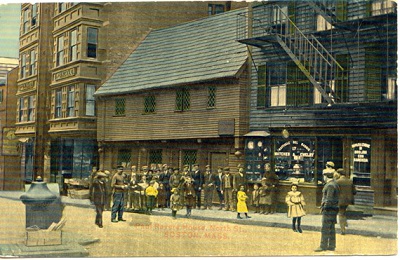
Paul Revere in the Revolutionary War:
After the Revolutionary War began, Revere served as a lieutenant colonel in the Massachusetts State Train of Artillery and commanded Castle Island in the harbor.
Revere’s military career was unremarkable and ended with the failed Penobscot expedition in 1779 during which he disobeyed orders and was charged with insubordination, ordered to resign command of Castle Island and was placed temporarily under house arrest.
Convinced that the incident was not his fault, Revere wrote a letter to General William Heath, dated October 24 of 1779, complaining that many of his fellow patriots, including his old rival William Burbeck, were conspiring against him:
“There was one Carnes, who was officer of marines, was persuaded to enter a complaint to Council against me, and they arrested me. After I got home, I awaited on Council; I gave them an account of the expedition. They ordered me to take the command of the Castle again (for during my absence, the command was given to Col. Crafts). But the plan was too deep laid for me to stay there long. General Hancock was appointed one of a committee to fortify the Castle, about the time I was order’d to Penobscot. He went to the Castle the next week after I was gone. He found fault with every thing there, Col. Burbeck urged him on, when he went to Boston he told in all companys that none but Col. Revere would have left the Castle in such a situation…Ned Greene was employed by the Committee as a sort of secretary, and he to git me from the Castle propagated that the men would not go to work there, if I staid, so he perswaded this Carnes to enter a complaint against me (this Carnes said upon oath). The Council arrested me on Monday, and ordered me to my house in Boston, and on Wednesday took the arrest off and ordered me to attend the Committee of Enquirey (They gave the command to Capt. Cushing for the time being, since which Gen Handcock [sic] is appointed Captain of the Castle, and Col Burbeck Capt Lieu of the Castle, &)…”
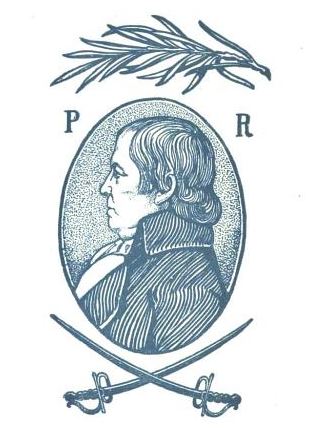
Revere was eventually court-martialed and acquitted in 1782 but the debacle brought an end to his hopes of a military career.
Paul Revere After the American Revolution:
After the revolution, Revere expanded his business and began exporting his goods to England. He also ran a small hardware store until 1789 and ran his own foundry where he made bolts, spikes and nails for local ships. Revere also produced cannons and cast bells.
In 1801, Revere opened the first copper rolling mill in America and created copper sheeting for the hull of the U.S.S. Constitution and the dome of the Massachusetts States House in 1803.
In 1804, Revere befriended Deborah Sampson, a woman who had disguised herself as a man and fought in the American Revolution, and was so impressed with her story that, in February, he wrote a letter to Congress asking them to award her a pension for her service. Sampson was awarded a pension the following year.
Revere continued to work well into his old age before he finally retired at the age of 76 in 1813. That same year, Revere became a widower again in 1813 when his wife Rachel died after a short illness.
Paul Revere in the War of 1812:
In September of 1814, Paul Revere volunteered his manual labor during the ongoing War of 1812, to help build Fort Strong on Noddle’s Island to protect Boston from the threat of British invasion.
Revere opposed the war but, with many coastal Massachusetts towns under attack by the British, he knew the town needed to strengthen its defenses so he willingly signed up when Governor Strong put out the call for volunteers. The fort was finished a month later in October of 1814.
Paul Revere’s Death and Burial:
On May 10, 1818, Paul Revere died of natural causes at 83 years of age and was buried in Boston’s Granary Burying Ground.
For more information on Paul Revere, check out this timeline of Paul Revere’s life.
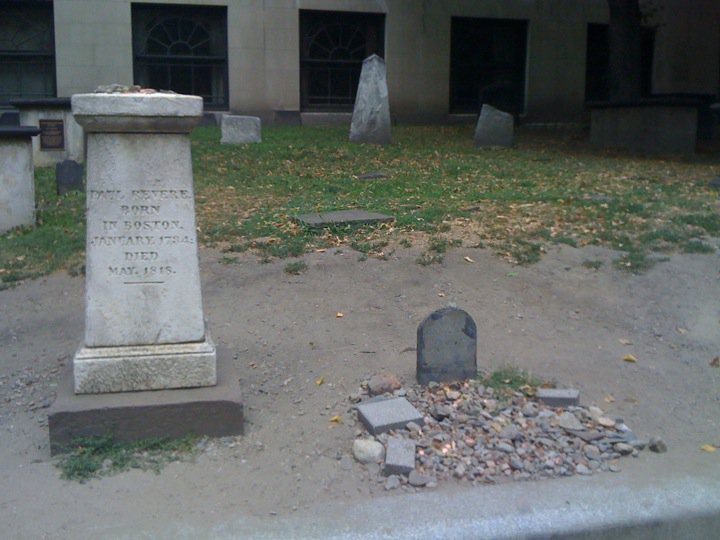
Paul Revere Historical Sites:
Paul Revere House:
Website: www.paulreverehouse.org
Address: 19 N Square, Boston, Mass
Paul Revere Capture Site:
Address: Battle Road, Lexington, Mass
Granary Burying Ground:
Website: www.cityofboston.gov/parks/hbgi/Granary.asp
Address: Tremont Street, Boston, Mass

Sources:
Triber, Jayne E. A True Republican: The Life of Paul Revere. University of Massachusetts Press, 1998.
Fischer, David Hackett. Paul Revere’s Ride. Oxford University Press, 1994.
Lodge of Saint Andrew and the Massachusetts Grand Lodge: Conditi et ducati, anno lucis 5756-5769. Lodge of Saint Andrew, 1870.
“The Paul Revere Biography.” Paul Revere House, www.paulreverehouse.org/bio
“Intelligence Throughout History: Paul Revere’s Midnight Ride.” Central Intelligence Agency, www.cia.gov/news-information/featured-story-archive/2010-featured-story-archive/intelligence-history-paul-revere.html

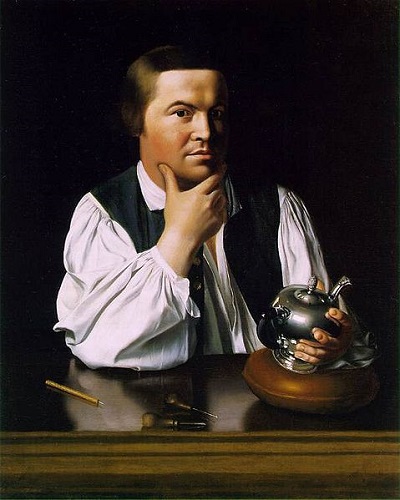
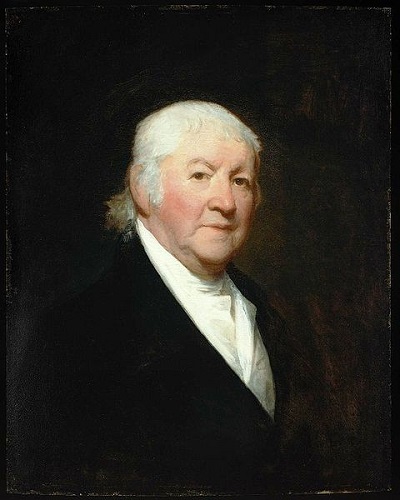
Rebecca, would you consider Revere famous at the time of his death?
He was probably well known among the other patriots in Boston but I don’t think he was famous then like he is now. It was really Longfellow’s poem that made him famous.
Do you have any idea what regiment he was in charge of at Castle Island. I have been trying to research his time in the Garrison on Castle Island, but other than one book dedicated to his court martial I have been completely unable to find any actual accounts of his career there. Do you know of any sources on the subject?
Sorry, I don’t know what regiment he was in charge of. There does seem to be a lack of info on his military service. I couldn’t find much on his time in the French and Indian war either. You might want to ask author of the Boston 1775 blog J.L. Bell or Walking Boston tour guide Ben Edwards. Edwards is related to Revere and knows a lot about him. You could also email or tweet at the Paul Revere House and see if they know.
This is good info, its helping me on my project at school. Thank you who ever made this website.
I liked this it helped me with my research on Paul Revere I will definitely use it again!